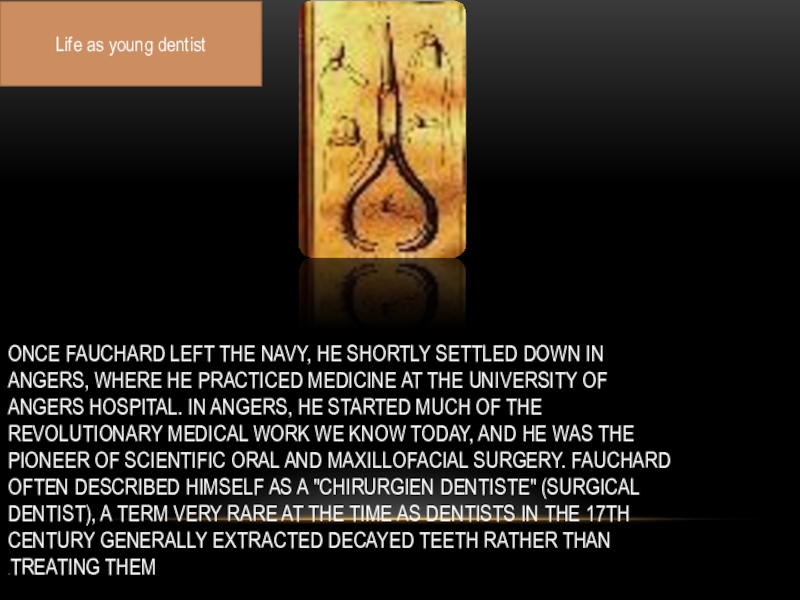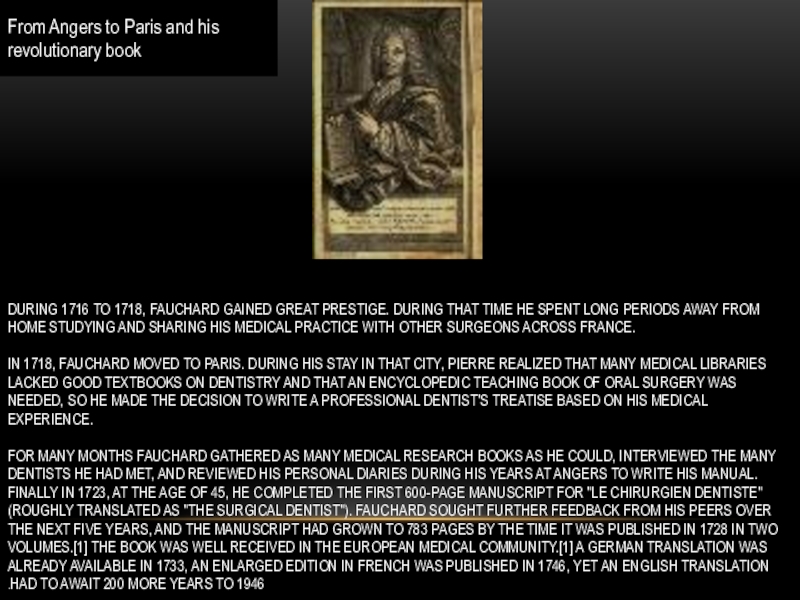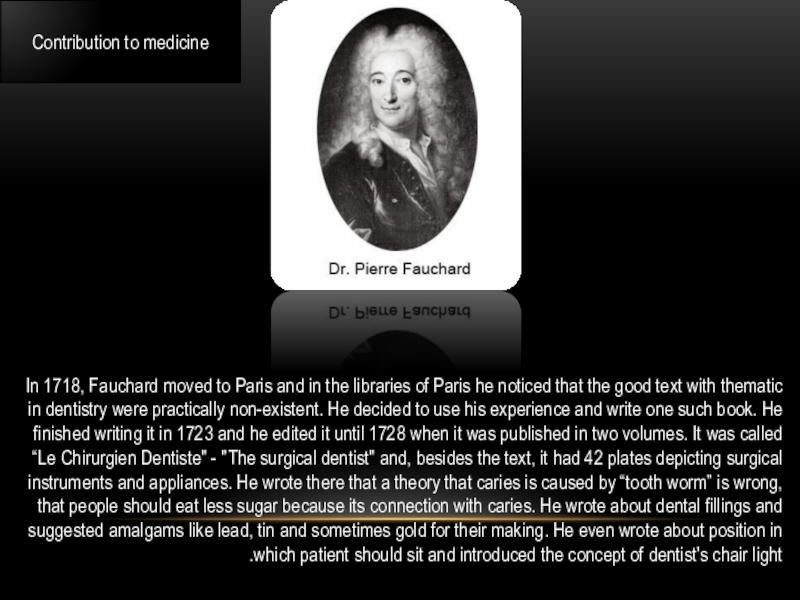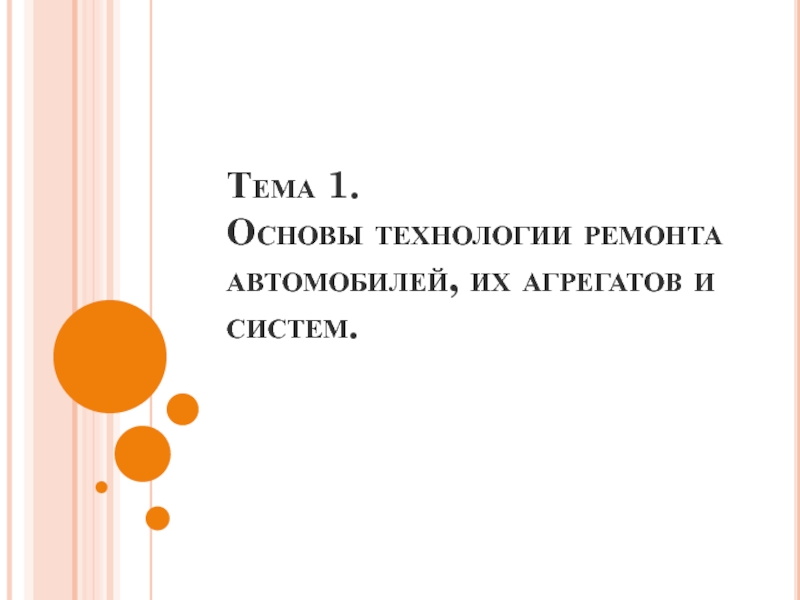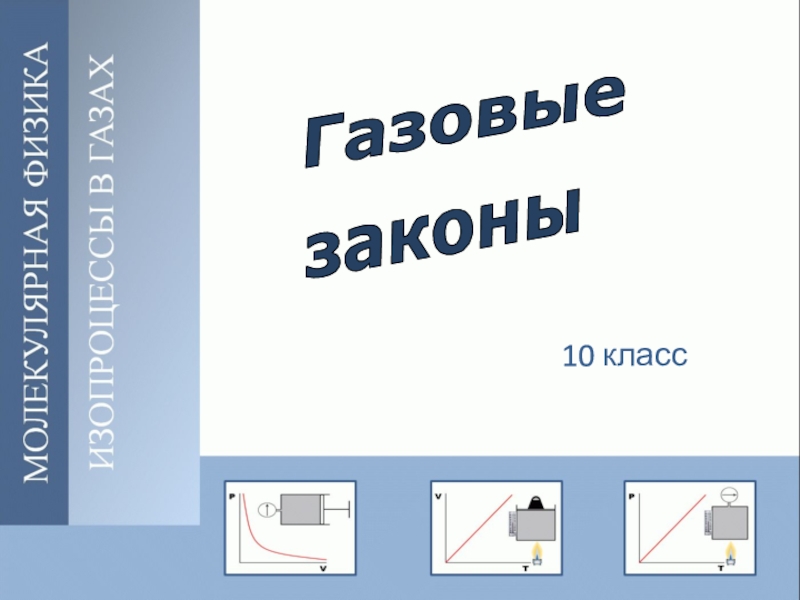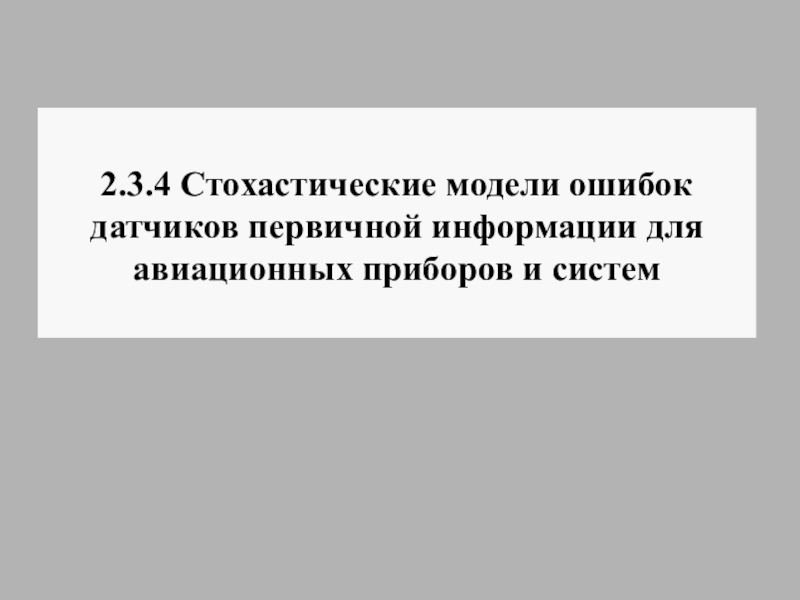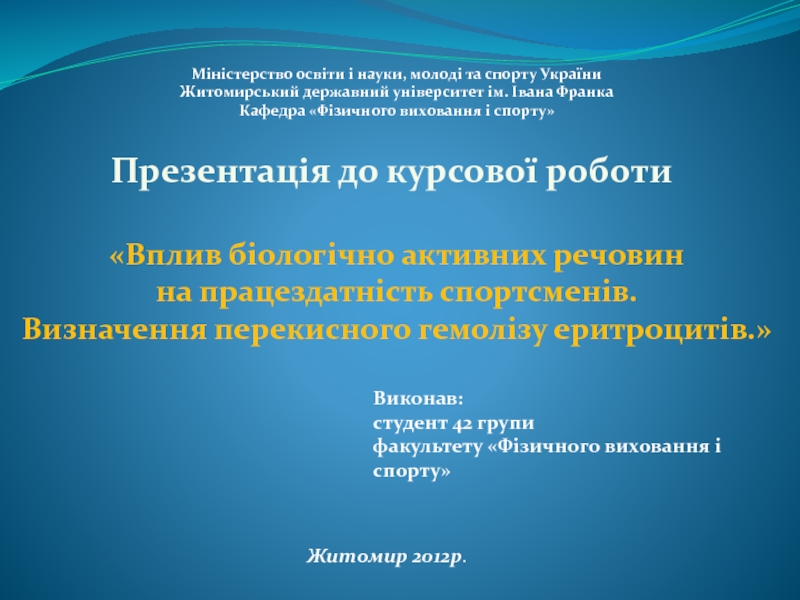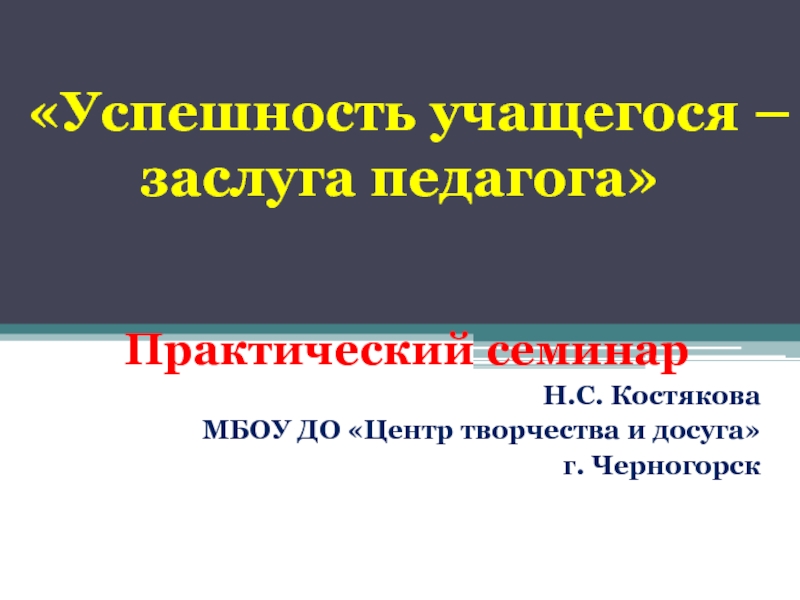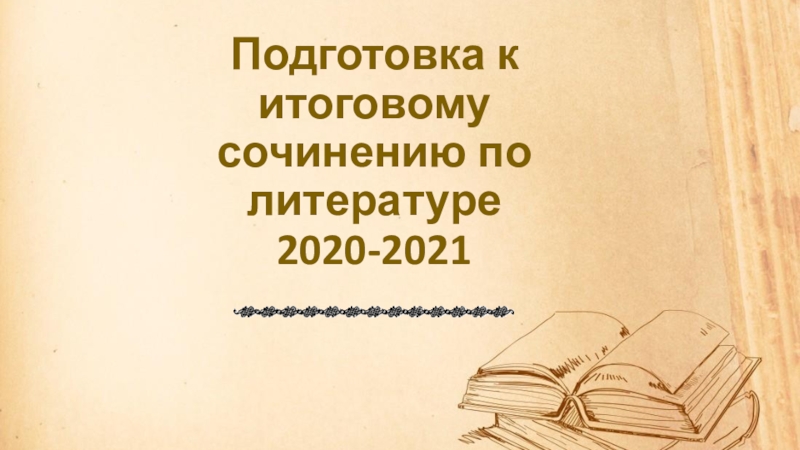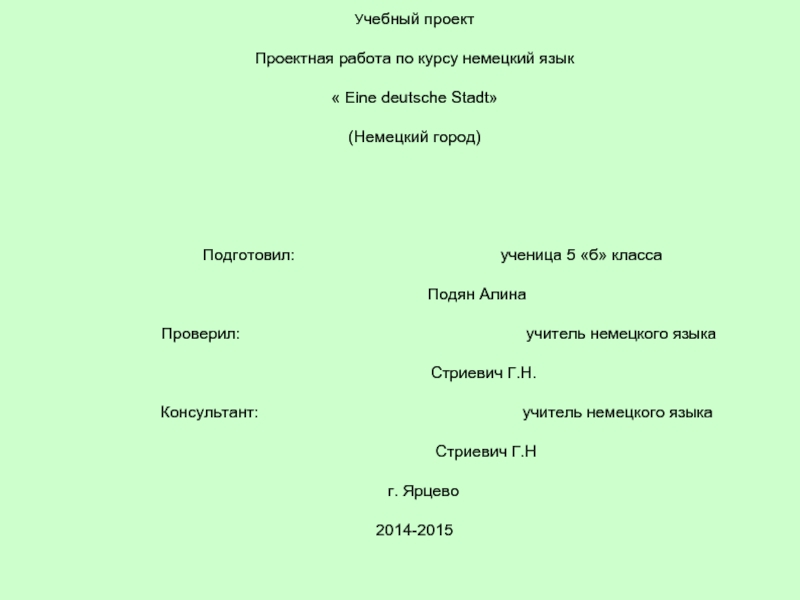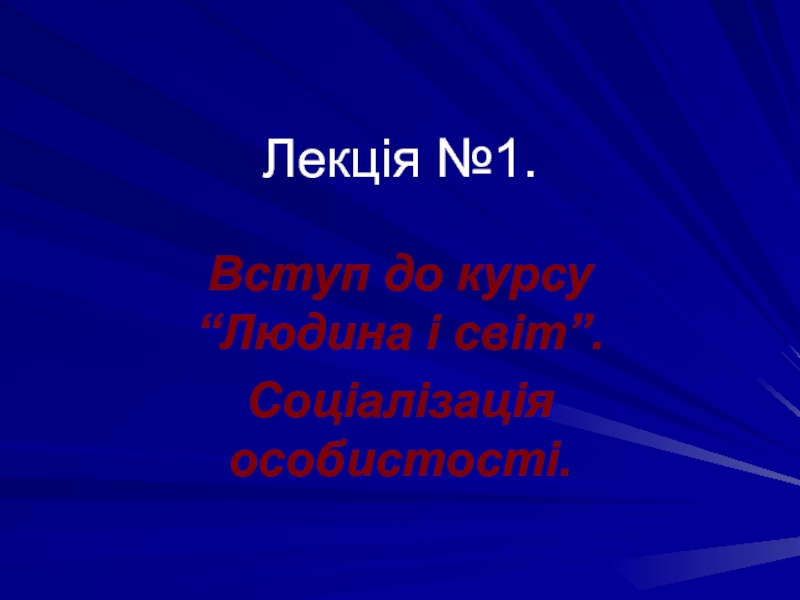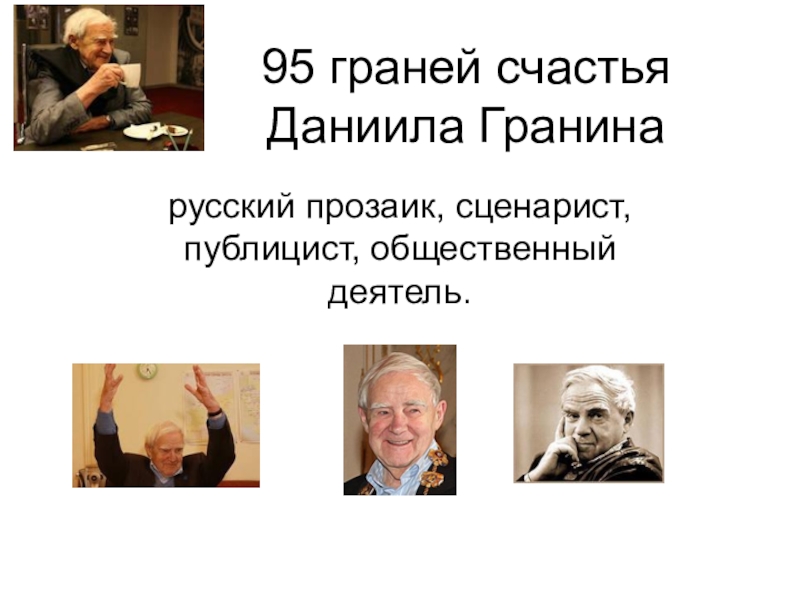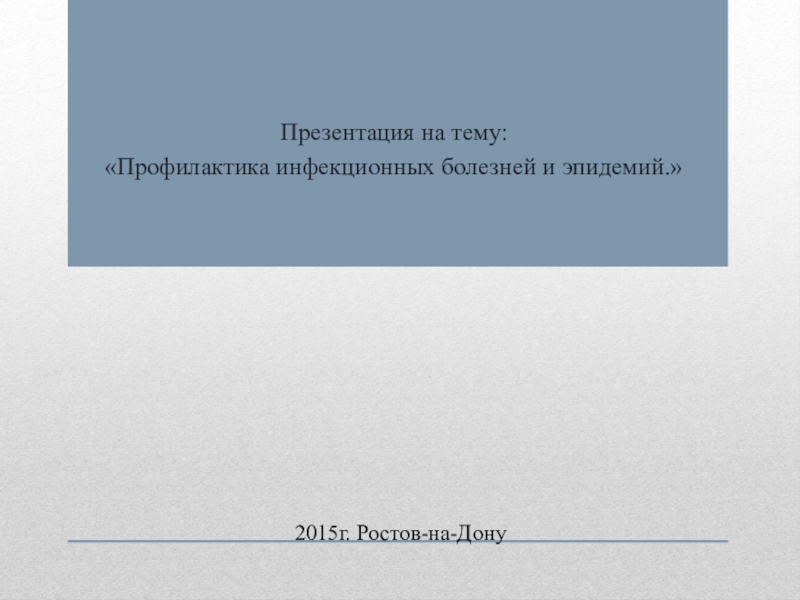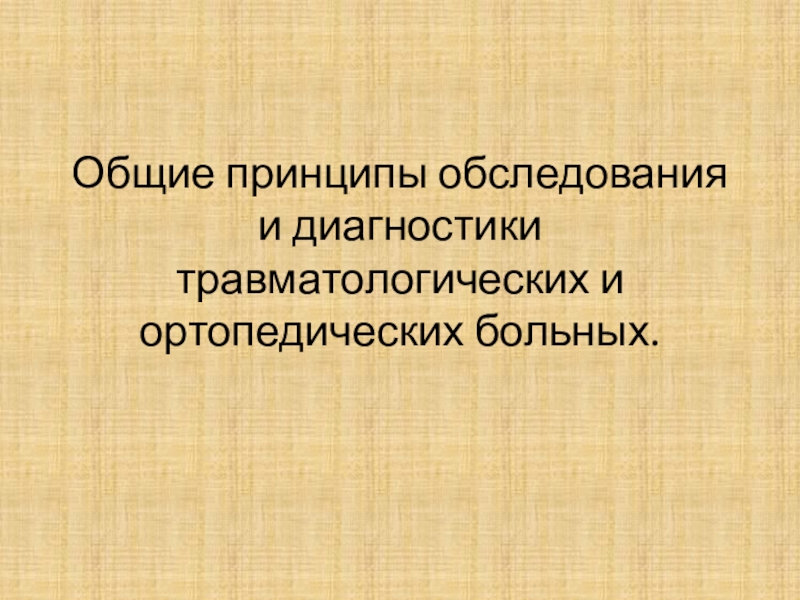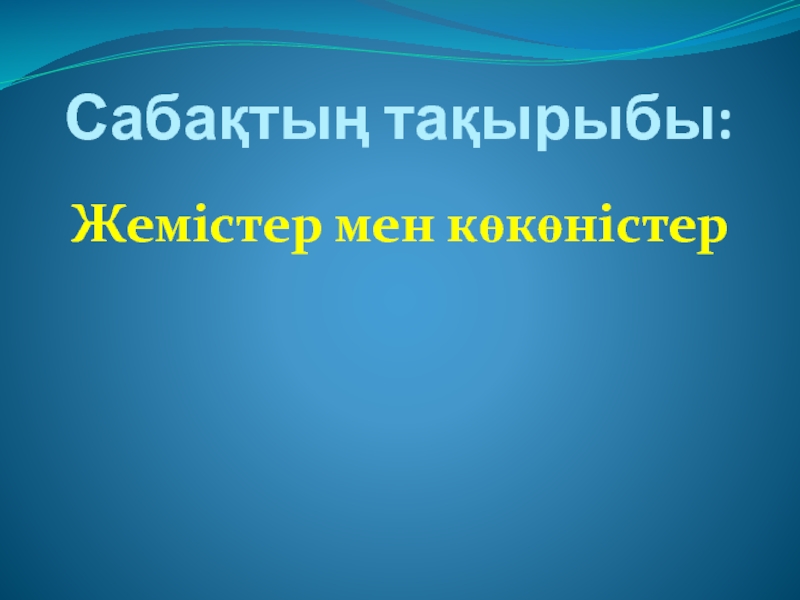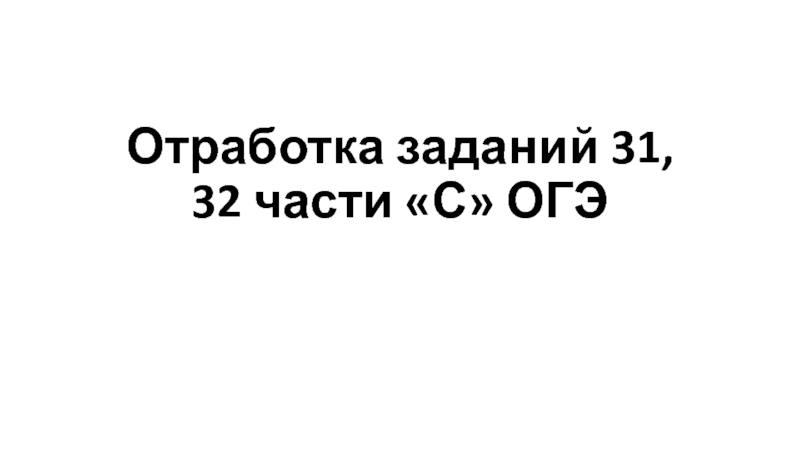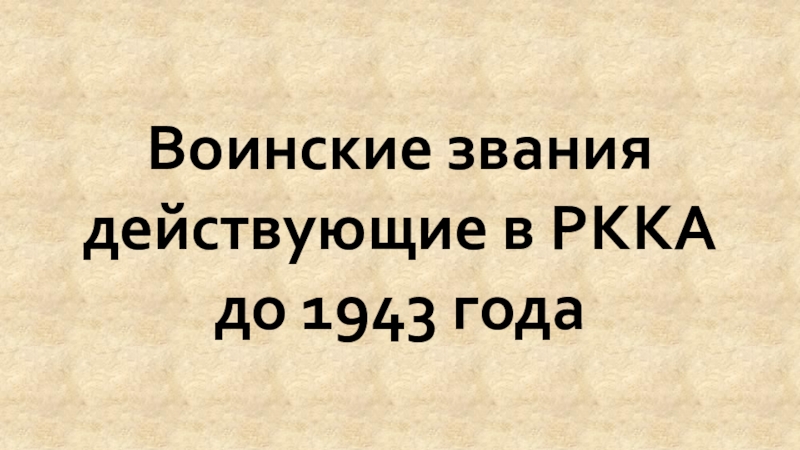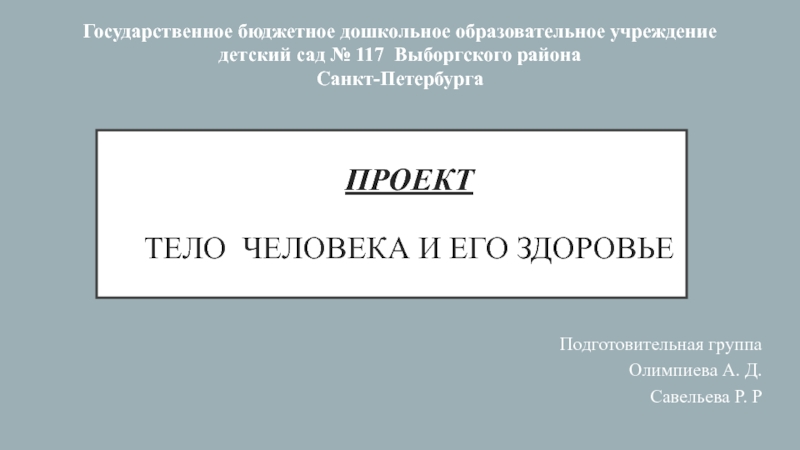Разделы презентаций
- Разное
- Английский язык
- Астрономия
- Алгебра
- Биология
- География
- Геометрия
- Детские презентации
- Информатика
- История
- Литература
- Математика
- Медицина
- Менеджмент
- Музыка
- МХК
- Немецкий язык
- ОБЖ
- Обществознание
- Окружающий мир
- Педагогика
- Русский язык
- Технология
- Физика
- Философия
- Химия
- Шаблоны, картинки для презентаций
- Экология
- Экономика
- Юриспруденция
Name : gendy tomas
Содержание
- 1. Name : gendy tomas
- 2. Pierre fauchardFather of dendistryPierre Fauchard (1678 –
- 3. Once Fauchard left the navy, he shortly
- 4. During 1716 to 1718, Fauchard gained great
- 5. The book consisted of 38 chapters in
- 6. Fauchard suggested that the German tooth
- 7. Contribution to medicineIn 1718, Fauchard moved to
- 8. Fauchard left the navy and settled down
- 9. One of the first physicians to denounce
- 10. Скачать презентанцию
Pierre fauchardFather of dendistryPierre Fauchard (1678 – March 22, 1761) was a French physician, credited as being the "father of modern dentistry".[1] He is widely known for writing the first complete
Слайды и текст этой презентации
Слайд 3Once Fauchard left the navy, he shortly settled down in
Angers, where he practiced medicine at the University of Angers
Hospital. In Angers, he started much of the revolutionary medical work we know today, and he was the pioneer of scientific oral and maxillofacial surgery. Fauchard often described himself as a "Chirurgien Dentiste" (surgical dentist), a term very rare at the time as dentists in the 17th century generally extracted decayed teeth rather than treating them.Life as young dentist
Слайд 4During 1716 to 1718, Fauchard gained great prestige. During that
time he spent long periods away from home studying and
sharing his medical practice with other surgeons across France. In 1718, Fauchard moved to Paris. During his stay in that city, Pierre realized that many medical libraries lacked good textbooks on dentistry and that an encyclopedic teaching book of oral surgery was needed, so he made the decision to write a professional dentist's treatise based on his medical experience. For many months Fauchard gathered as many medical research books as he could, interviewed the many dentists he had met, and reviewed his personal diaries during his years at Angers to write his manual. Finally in 1723, at the age of 45, he completed the first 600-page manuscript for "Le Chirurgien Dentiste" (roughly translated as "The Surgical Dentist"). Fauchard sought further feedback from his peers over the next five years, and the manuscript had grown to 783 pages by the time it was published in 1728 in two volumes.[1] The book was well received in the European medical community.[1] A German translation was already available in 1733, an enlarged edition in French was published in 1746, yet an English translation had to await 200 more years to 1946.From Angers to Paris and his revolutionary book
Слайд 5The book consisted of 38 chapters in volume 1 and
26 chapters in volume 2. Both volumes contained 42 plates
depicting surgical instruments and appliances. Many of the ideas introduced in the book were totally new to dentistry.[2] Pierre Fauchard engraved in his books many of his inventions of instruments made for oral surgery, such as the obturator and the now famous dentist's drill. The drill Fauchard developed was manual and powered by a catgut twisted around a cylinder. He also suggested in his book that oil of cloves and cinnamon be used for pulpitis.[2] Fauchard recommended that human urine be used in the treatment of early stages of caries.[2] A chemical compound that he was not able to identify in urine at the time was ammonia, which was responsible for the "beneficial result" of urine. Although urine had been used for this purpose since the ancient times to Middle Ages, the treatment met with resistance by many physicians and patients."The surgical dentist"
Слайд 6 Fauchard suggested that the German tooth worm theory was
mistaken in its explanation of dental decay. His observations through
the microscope showed there was no evidence of worms.[2] He also said the cause of dental caries was sugar, and people should limit it from their diet.[2] He disproved theories of spontaneous tooth generation, arguing that the first teeth, which are called milk teeth, separate themselves from their roots. Some dentists at Fauchard's time believed they didn't have roots.[2] He introduced dental fillings as treatment for dental cavities, and he suggested amalgams like lead, tin and sometimes gold. He also said that teeth should be cleaned periodically by a dentist.[2] He said that braces should be used to correct the position of teeth, and that children's teeth could be moved more easily and quickly than adults', a result of the size of the teeth roots, according to Fauchard.[2] He was ahead of his time in medical practice and he described the way the patient should be greeted by the doctor and the position in which the patient should sit.[2] He recommended that the dentist should stand behind the patient to help them relax, and he introduced the concept of dentist's chair light.[2] Yet, he recommended that one gargle twice a day with freshly collected urine ("..se rinser la bouche tous les matins, & même le soir, avant que de se coucher, avec quelques cuillerées de son urine tout nouvellement renduë..." />[3]Слайд 7Contribution to medicine
In 1718, Fauchard moved to Paris and in
the libraries of Paris he noticed that the good text
with thematic in dentistry were practically non-existent. He decided to use his experience and write one such book. He finished writing it in 1723 and he edited it until 1728 when it was published in two volumes. It was called “Le Chirurgien Dentiste" - "The surgical dentist" and, besides the text, it had 42 plates depicting surgical instruments and appliances. He wrote there that a theory that caries is caused by “tooth worm” is wrong, that people should eat less sugar because its connection with caries. He wrote about dental fillings and suggested amalgams like lead, tin and sometimes gold for their making. He even wrote about position in which patient should sit and introduced the concept of dentist's chair light.Слайд 8Fauchard left the navy and settled down in Angers. There
he practiced medicine at the University of Angers Hospital. There
he began his revolutionary medical work including the pioneer work in scientific oral and maxillofacial surgery. He called himself a "Chirurgien Dentiste" which meant surgical dentist which was a name, at that time, reserved for those that extracted decayed teeth rather than treat them. Even with the primitive surgical instruments of that time that were very limited, he was considered a highly skilled surgeon. He also invented his on dental instruments and used tools from other trades like tools from watch makers, jewelers and even barbers, if he thought that he could use them in surgery. He treated dental cavities with dental fillings with which he was the first in Europe. He recognized that the sugar and its derivate acids, like tartaric acid, were to blame for caries and that if not treated, caries can turn into tumors. He also pioneered dental prosthesis, and investigated methods to replace lost teeth. His ideas also included holding of the artificial teeth to the healthy ones with wire or thread and first dental braces.Слайд 9One of the first physicians to denounce medical malpractice in
dentistry, he alleged to a tribunal that many dentists in
France did not have a degree or experience. Fauchard became a model for all dentists to come. He died at the age of 83 in Paris on March 22, 1761.Died: March 22, 1761, Paris
Medical specialty: Dentistry
Born: 1678, Saint-Denis-de-Gastines
Works written: Le chirurgien dentist


